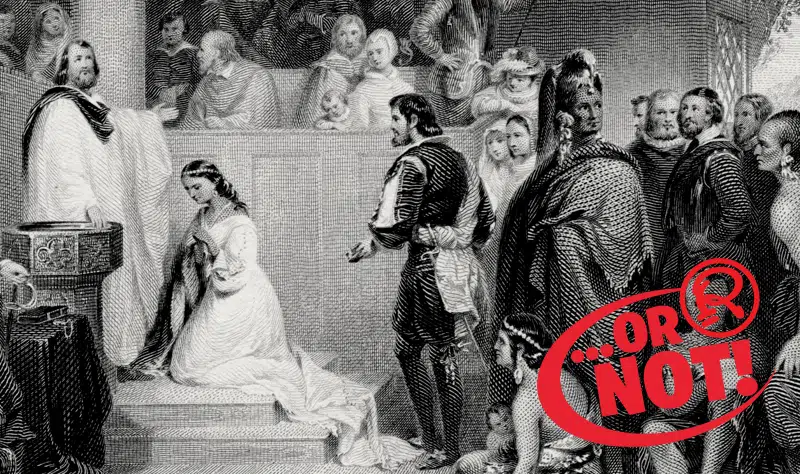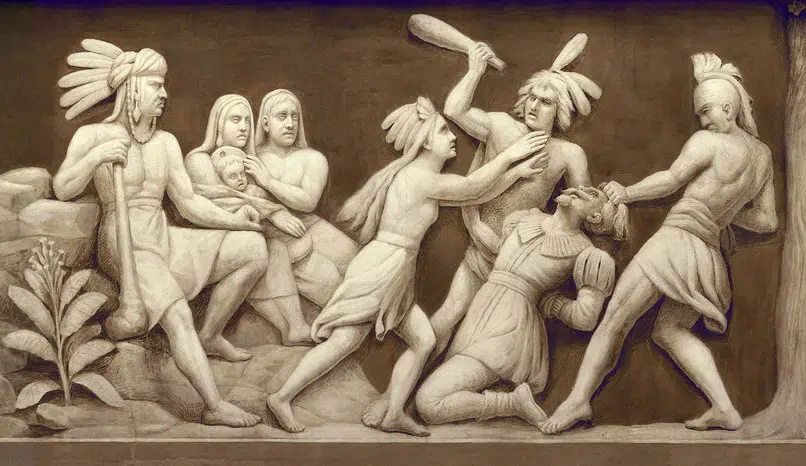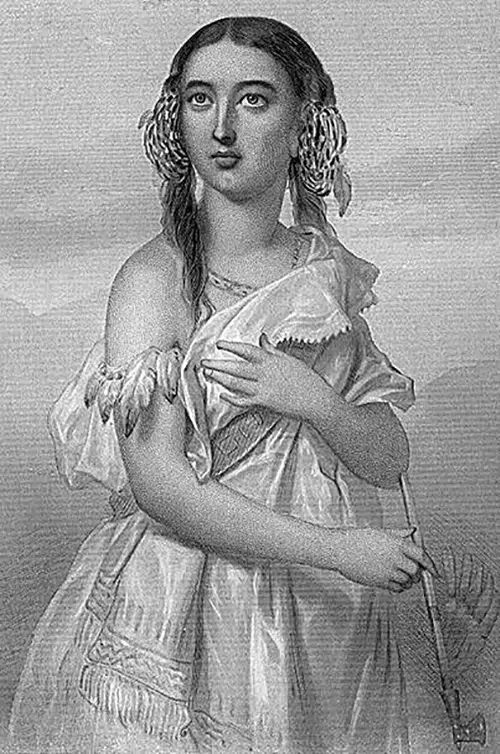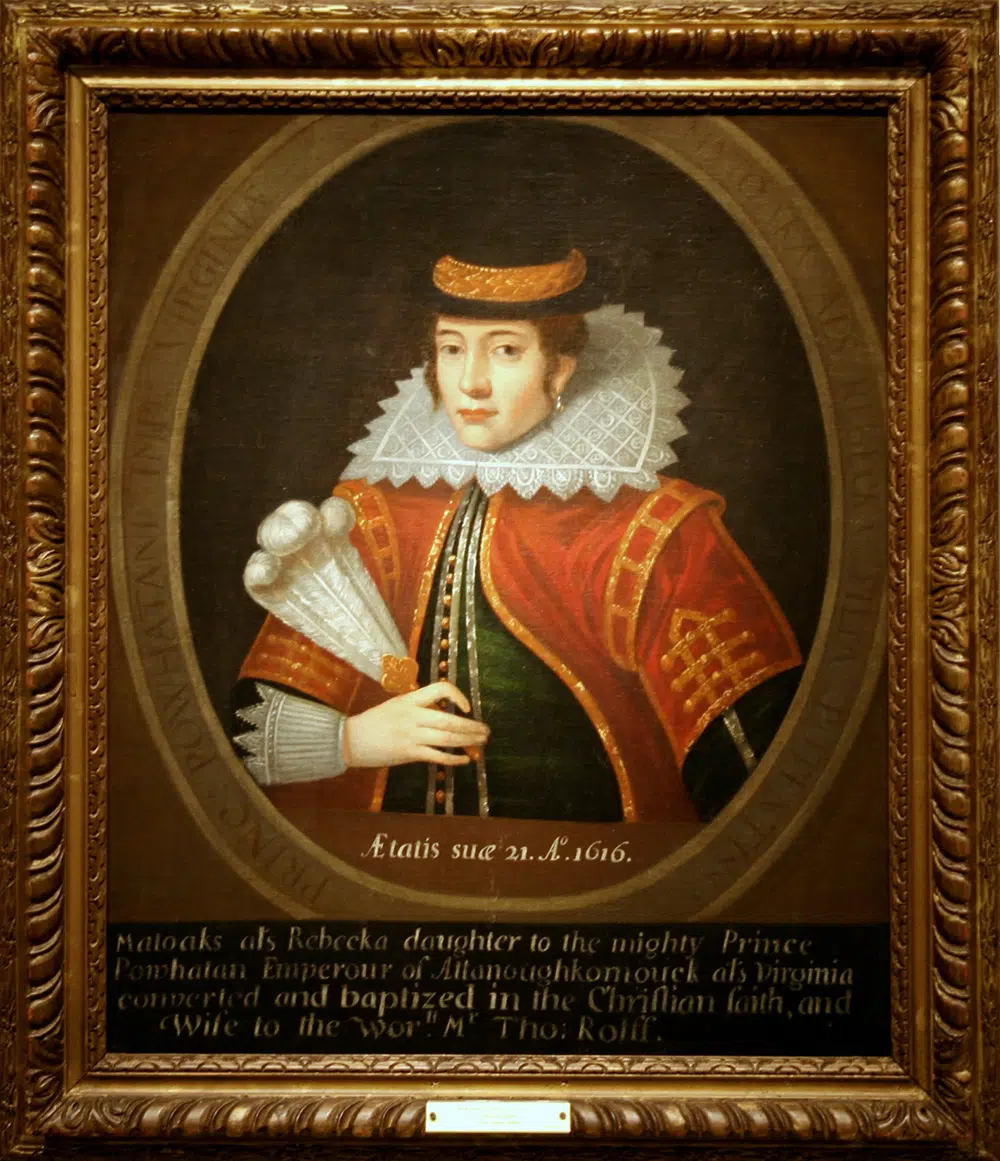Did Pocahontas Love John Smith And Save His Life?
Featured in Ripley's Believe It or Not!

Or Not
Today: Pocahontas and John Smith.
Disney and some other versions of the Pocahontas story depict the Englishmen John Smith as a man who falls in love with an Indian princess who saved his life. Smith even wrote in his book Generall Historie of Virginia that the young Native American woman put her own life in jeopardy twice in order to spare his. In reality, Pocahontas too young for romance when she met Smith, and she didn’t prevent his death.





